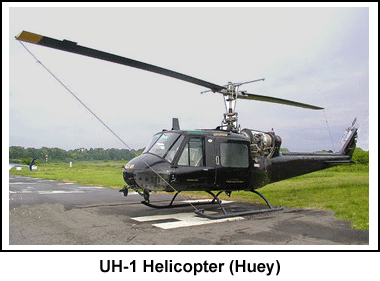 Kite lines appear to have been a major contributing factor in the crash of a Phillipine Air Force UH-1 helicopter in Lapu-Lapu City in the central Phillipines on Saturday afternoon, April 28, 2007. Nine people died in the horrific accident and several others were injured according to Phillipine press and military reports. Two of the deceased were air crew members while the remaining seven were civilians struck when the helicopter lost flight stability and crashed into the street.
Kite lines appear to have been a major contributing factor in the crash of a Phillipine Air Force UH-1 helicopter in Lapu-Lapu City in the central Phillipines on Saturday afternoon, April 28, 2007. Nine people died in the horrific accident and several others were injured according to Phillipine press and military reports. Two of the deceased were air crew members while the remaining seven were civilians struck when the helicopter lost flight stability and crashed into the street.
According to eye witness reports, as the helicopter flew over a market place it briefly came into contact with the nylon lines of three kites flying in the area. One of the kites was believed to be a poster of a candidate in an upcoming election.
AHN Global News Agency's correspondent Komfie Manalo reported the following in his story filed on Sunday, April 29, 2007:
"Lt. Gen. Horacio Tolentin, commanding general of the PAF, said that investigators found strands of nylon strings two millimetres in diamere entangled with the rotor system of the downed aircraft."
Although it was reported that the engine of the helicopter continued to run until the crash landing, it appeared as though the rotors had stopped moving.
General Tolentin also was quoted as saying that:
"there were no indications of an error or negligence by the pilot. The engine did not stop but witnesses said the rotor had stopped rotating as the helicopter dropped, he said.
He said the strands of nylon string found on the rotor system reinforced the investigators' theory that the accident was caused by a kite that was entangled with the helicopter's rotor.
He said investigators learned that at least three kites were being flown close to the Philippine Air Force base on Mactan Island at the time when the helicopter crashed as it was preparing to land."
In North America, flying kites near airports is strictly regulated by government agencies. In the United States the regulations are established and enforced by the FAA (Federal Aviation Administration). In Canada the regulations are established and enforced by Transport Canada. The rules in both nations cover the proximity to an air field and the height at which kites can be flown.
This tragic story reminds kiters to be responsible with their kite line and kites in the air. Safe flying practices should be maintained at all times and kites should constantly be monitored to ensure that there is no danger of breaking away.
Just a little over a year ago, on April 8, 2006, I also posted an entry encouraging kiters to be cautious with their kite line. In that story, Breakaway Kites Can Pose Major Safety Hazard, I outlined some examples of why kiters need to respect the strength of their kites and kite lines at all times.